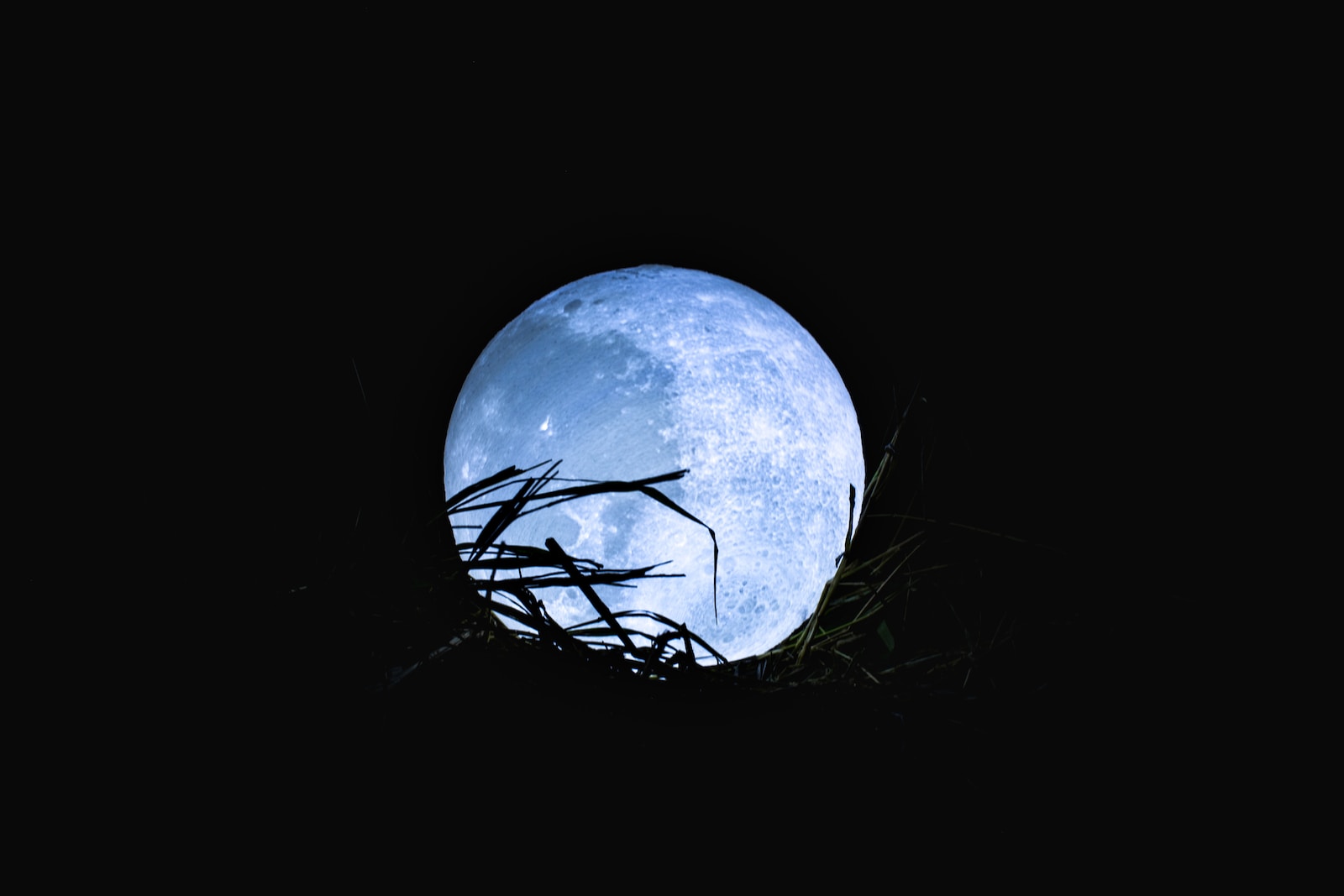Table of Contents
ToggleIntroduction
Have you ever heard the phrase “once in a blue moon”? It means something that happens very rarely. Well, in August 2023, you will have the opportunity to see a real blue moon in the sky. And not just any blue moon, but also a supermoon!
A blue moon and a supermoon are both special types of full moons that occur under certain conditions. They are not very common, so they are worth watching. In this article, we will explain what these phenomena are, when and where to see them, and how to take the best photos.
What is a Blue Moon?
A blue moon is the second full moon in a calendar month. Normally, there is only one full moon per month, but sometimes there are two. This happens because the lunar cycle (the time it takes for the moon to go from new to full and back to new) is about 29.5 days, while most months have 30 or 31 days.
The term “blue moon” has nothing to do with the color of the moon. The moon does not actually turn blue, unless there is some dust or smoke in the atmosphere that can filter out other colors and make the moon appear bluish.
The last blue moon occurred on October 31, 2020 (Halloween), and the next one will occur on August 31, 2023.
What is a Supermoon?
A supermoon is a full moon that occurs when the moon is at its closest point to Earth in its orbit. This makes the moon appear larger and brighter than usual.
The term “supermoon” is not an official astronomical term, but rather a popular name given by the media. The scientific term for a supermoon is “perigee-syzygy”, which means that the moon is at its perigee (closest point) and in syzygy (alignment) with the Earth and the sun.
The distance between the Earth and the moon varies throughout the year, because the moon’s orbit is not perfectly circular, but slightly elliptical. The average distance is about 384,000 kilometers (238,000 miles), but it can range from about 356,000 kilometers (221,000 miles) at perigee to about 406,000 kilometers (252,000 miles) at apogee (farthest point).
A supermoon can be up to 14% larger and 30% brighter than a normal full moon. However, these differences are not very noticeable to the naked eye, unless you compare them side by side.
The last supermoon occurred on May 26, 2021, and coincided with a total lunar eclipse (also known as a blood moon). The next one will occur on June 14, 2022.
When and Where to See the Blue Moon and Supermoon in August 2023
The blue moon and supermoon in August 2023 will occur on August 31 at 1:35 UTC (Universal Time Coordinated). This means that depending on your location and time zone, you may see it on August 30 or August 31.
To find out the exact time and date for your location, you can use this online tool: https://www.timeanddate.com/moon/
The best place to see the blue moon and supermoon is somewhere with a clear view of the eastern horizon, where the moon will rise. You can also use the online tools to find out where the moon will rise for your location.
How to Take the Best Photos of the Blue Moon and Supermoon?
If you want to capture the beauty of the blue moon and supermoon with your camera, here are some tips and tricks:
- Use a tripod. This will help you avoid blurry photos due to camera shake (Buy on Amazon).
- Use a telephoto lens. This will help you zoom in on the details of the moon’s surface (Buy on Amazon).
- Use manual mode. This will give you more control over the exposure settings.
- Use a low ISO. This will reduce noise and graininess in your photos.
- Use a fast shutter speed. This will freeze the motion of the moon and prevent overexposure.
- Use a small aperture. This will increase the depth of field and sharpness of your photos.
- Use manual focus. This will help you focus accurately on the moon.
- Experiment with different compositions. You can try to include some foreground elements, such as trees or buildings, to create a sense of scale and contrast. You can also try to capture the moon in different phases, such as when it is rising or setting, or when it is partially obscured by clouds.
- Edit your photos. You can use some photo editing software, such as Photoshop or Lightroom, to enhance the colors, contrast, and brightness of your photos. You can also crop your photos to remove unwanted distractions or improve the composition.
Conclusion
A blue moon and a supermoon are rare and spectacular events that you don’t want to miss. In August 2023, you will have the chance to see both of them at the same time. Make sure you mark your calendar and plan ahead to enjoy this amazing sight. And don’t forget to take some stunning photos to share with your friends and family. Happy moon watching!








1 thought on “How to See the Rare Blue Moon and Supermoon in August 2023”
Pingback: Strawberry Moon 2024: A Glowing Gateway to Summer